
KHAI THÁC DCH V
IN TOÁN ÁM MÂY
Nguyen Hong Son,PhD

2
Cung cp kin thc cbn vnguyên lý cain toán ám mây và làm
quen vi khai thác các dch v in toán ám mây.
Kin thc
-Phân bitưc các thành phn thit yu trong hthng hthng in
toán ám mây
-Phân bitưc các mô hình dch v in toán ám mây gm SaaS,
PaaS, IaaS và các xu hưng mrng.
Knng
-Khai thác ưc các nn tng ám mây khác nhau nhưAmazon EC2,
Google AppEngine, Windows Azure, IBM Blumix
MC TIÊU MÔN HC

TÀI LIU THAM KHO
[1] Rajkumar Buyya, James Broberg, Andrzej M. Goscinski,
Cloud Computing: Principles and Paradigms, Wiley
Publishing, 2011. (Lý thuyt)
[2] Các user guides tnhà cung cp dch v ám mây như
Amazon EC2, Microsoft Azure...(Thc hành)
3

INTRODUCTION TO CLOUD
COMPUTING

Ideas
•From providing electric power to cloud computing
•Cluster computing, grid computing: allowing access to large
amounts of computing power in a fully virtualized manner, by
aggregating resources and offering a single system view
•Main goal: delivering computing as a utility
•Utility computing describes a business model for on-
demand delivery of computing power; consumers pay providers
based on usage (“pay-as-you-go”).
5

![Bài giảng Nhập môn điện toán Trường ĐH Bách Khoa TP.HCM [Mới nhất]](https://cdn.tailieu.vn/images/document/thumbnail/2025/20250806/kimphuong1001/135x160/76341754473778.jpg)
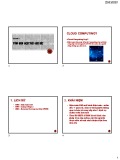


![Điện toán đám mây: Công nghệ cốt lõi thúc đẩy chuyển đổi số [Mới nhất]](https://cdn.tailieu.vn/images/document/thumbnail/2021/20211106/visteveballmer/135x160/501636162983.jpg)
![Đề cương chi tiết học phần Điện toán đám mây [mới nhất]](https://cdn.tailieu.vn/images/document/thumbnail/2020/20201223/hoangcanhminh_111191/135x160/1291608717332.jpg)


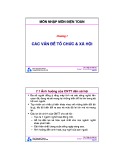
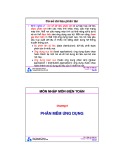


![Đề thi Excel: Tổng hợp [Năm] mới nhất, có đáp án, chuẩn nhất](https://cdn.tailieu.vn/images/document/thumbnail/2025/20251103/21139086@st.hcmuaf.edu.vn/135x160/61461762222060.jpg)

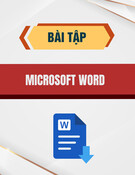
![Bài tập Tin học đại cương [kèm lời giải/ đáp án/ mới nhất]](https://cdn.tailieu.vn/images/document/thumbnail/2025/20251018/pobbniichan@gmail.com/135x160/16651760753844.jpg)
![Bài giảng Nhập môn Tin học và kỹ năng số [Mới nhất]](https://cdn.tailieu.vn/images/document/thumbnail/2025/20251003/thuhangvictory/135x160/33061759734261.jpg)
![Tài liệu ôn tập Lý thuyết và Thực hành môn Tin học [mới nhất/chuẩn nhất]](https://cdn.tailieu.vn/images/document/thumbnail/2025/20251001/kimphuong1001/135x160/49521759302088.jpg)
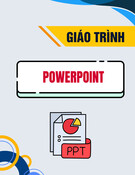
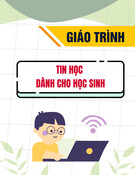
![Trắc nghiệm Tin học cơ sở: Tổng hợp bài tập và đáp án [mới nhất]](https://cdn.tailieu.vn/images/document/thumbnail/2025/20250919/kimphuong1001/135x160/59911758271235.jpg)


![Giáo trình Lý thuyết PowerPoint: Trung tâm Tin học MS [Chuẩn Nhất]](https://cdn.tailieu.vn/images/document/thumbnail/2025/20250911/hohoainhan_85/135x160/42601757648546.jpg)

